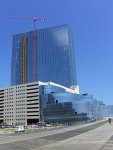T
T.M.Haja Sahib
Guest
You keep using the word "theory" and that is a very good thing as we really don't understand lightning and lightning protection systems. In fact a few years ago the CMP for NFPA 780 voted to withdraw the standard at the proposal stage because there is a lack of technical information to support the current theories of lightning protection.
After Francklin's introduction of lightning protection system,there is a tremendous reduction in the damages to life and property caused by lightning over the years.The lightning protection system method is incorporated in NFPA 780.
To the extent our lightning protection works,we can say we have an understanding of lightning and lightning protection systems to that extent.
Regarding 'Theory',you can trust it,if it can 'predict'.
Last edited:



